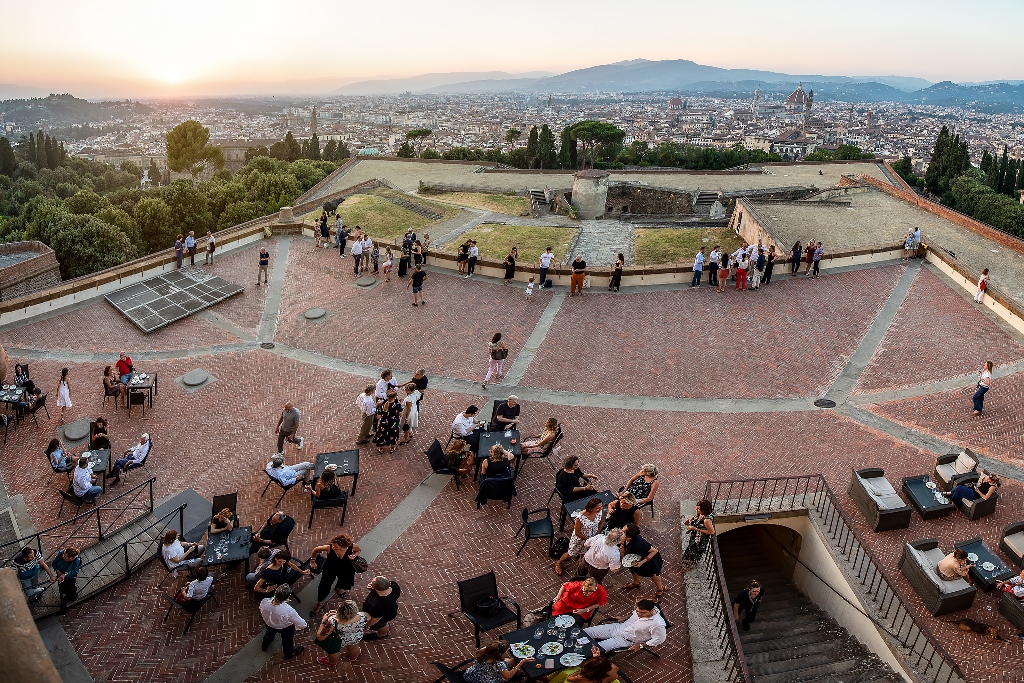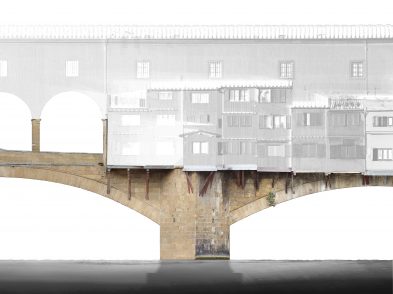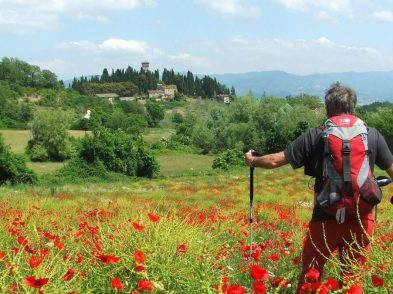A number of guided tours, organized by the Mus.e Association, are available this summer around the city’s towers, fortresses and gates.
Forte Belvedere

Spectacular view over the city from Forte Belvedere
It’s worth the trek up the hill to see the treasure room, opening to the public for the first time this summer. A secret hiding place for the Medici family riches, this underground room was protected by deadly traps. Seek out the mysterious crypt and marvel at the riches of the 16th-century Medici rulers.
Torre di San Niccolò

Walk the walls of Torre di San Niccolò
Formerly a gate in the city’s defensive walls, this stand-alone tower in piazza Poggi survived the 19th-century urban renewal project because of its fine views over the skyline. Admire the recent restoration of the Rampe del Poggi as you climb the 160 steps to the top. The grande dame of the Florentine towers can be visited daily until September 30.
Torre della Zecca

Panoramic view from Torre della Zecca
The tower was originally part of the ancient walls built around 1284. Located in piazza Piave, it takes its name from the word “zecca”, where Florentine coins were minted. It stands isolated by a junction on the city’s ring road, close to the lungarno della Zecca Vecchia. In its heyday, this monument was called a “terminal tower” as it hemmed Florence in from the Arno River to the east.
Baluardo a San Giorgio

Part of the historic fortifications of Florence
A stronghold of medieval Florence, the bastion of San Giorgio is located near the Porta San Giorgio gate. It is also referred to as the Baluardo della Ginevra due to the fact that a spring (the Ginerva) once flowed through the area. The bulwark was built on the orders of Cosimo I de’ Medici in 1544 on a rampart designed by Michelangelo during the Siege of Florence in 1529-30.
Fortezza da Basso

Built as a tribute to the patron saint of Florence, Saint John the Baptist
The fortress of Saint John the Baptist was part of the 14th-century walls of Florence. Designed by Antonio da Sangallo the Younger for Alessandro de’ Medici to defend against internal and external enemies, the fortress, now the city’s conference centre, is the largest monument in Florence, sprawling across 100,000 square metres.
Torre di Arnolfo

View from the top / Ph. @marcobadiani
The tower and walkway of Palazzo Vecchio is named after Arnolfo di Cambio, who planned this architectural feat in the 13th century. More than 200 steps will lead to the summit of the 95-metre-high lookout. Pause for a moment to peer into the tiny cell, the Alberghetto, where Cosimo the Elder was imprisoned in 1433, followed by Savonarola in 1498: Cosimo went on to lead the Medici, whereas Savonarola was put to death in piazza della Signoria.








